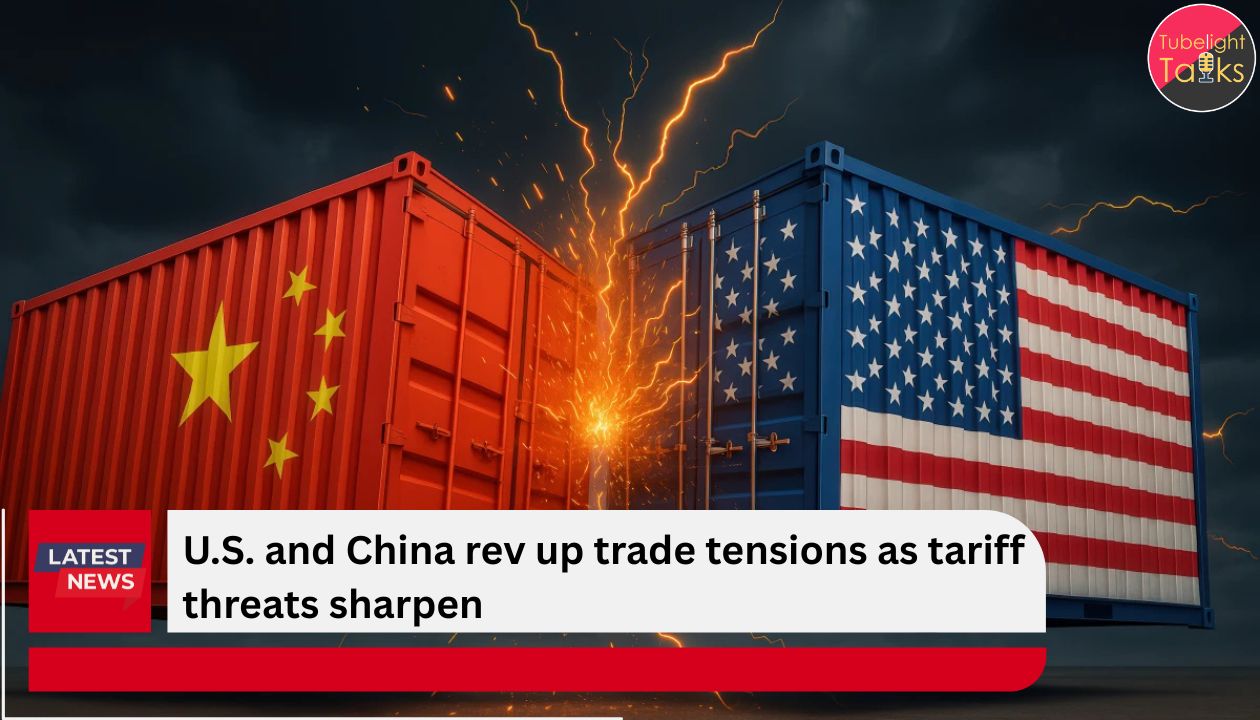Trade tensions between the United States and China have accelerated once again as both sides prepare for a fresh round of negotiations while simultaneously issuing warnings of sweeping tariffs. Washington has threatened a 100 percent duty on Chinese imports unless Beijing relaxes new export curbs on critical rare‑earth minerals, while China has responded with export controls of its own. A meeting between U.S. Treasury Secretary Scott Bessent and Chinese Vice Premier He Lifeng is scheduled next week in Malaysia as both sides try to steer away from a full‑blown trade war that could disrupt global supply chains.
The Tariff Threat Landscape
U.S. offensive and Chinese reaction
The U.S. administration, citing strategic vulnerabilities and a massive goods‑trade deficit with China, has floated the prospect of a 100 percent tariff on Chinese imports starting November 1 unless Beijing lifts its controls on rare‑earth exports. China, for its part, has implemented sweeping export restrictions—particularly on rare‑earth elements essential for high‑tech manufacturing—escalating the stakes.
Upcoming talks and diplomatic signals
In a bid to prevent escalation, Secretary Bessent and Vice Premier He held a “frank and detailed” video call and agreed to a face‑to‑face meeting next week in Malaysia. The meeting will serve as a litmus test for whether bilateral trade relations can be steered back from the brink of a tariff‑induced decoupling.
Economic and Global Impact
Supply‑chain disruption risks
Analysts warn that renewed U.S.–China friction could wreak havoc across global value chains. A recent study projected that prolonged trade fragmentation could cut global GDP by as much as 7 percent.
Strategic sectors targeted
Rare‑earth minerals, semiconductor manufacturing, and battery production are among the contested domains. China’s export curbs and U.S. tariff threats highlight the battle over supply‑chain dominance and national security‑linked trade policy.
Geopolitical and strategic undercurrents
Trade policy as security policy
The row is not simply about tariffs or trade volumes—it is increasingly framed in terms of national security, technological leadership and strategic autonomy. Both governments are mobilising trade instruments accordingly.
Third‑party effects and global reaction
Other countries and multilateral bodies are uneasy. The World Trade Organization warned that a breakdown in U.S.–China trade could trigger widespread disruption. Export diversification by China toward Southeast Asia and Latin America is already underway.
Read Also: Trump and Xi set for South Korea summit
Balanced Exchange Build Stronger Foundation
The conflict—even in trade—reveals an underlying lesson: true prosperity arises when cooperation supersedes contention, and when nations engage with integrity and shared purpose, not just leverage. The U.S.–China tension highlights how short‑term advantage can give way to long‑term vulnerability. A principle of “Sat Gyan” teaches that balanced exchange, respect for others and sustainable connections build stronger foundations than unilateral pressure and aggressive tariffs. if you want to know more about “Sat Gyan” then please visit www.jagatgururampalji.org
What Lies Ahead: Scenarios and Stakes
The Malaysia meeting next week is critical. If agreement eludes both sides, the U.S. may impose duties, prompting Chinese retaliation—potentially sparking trade decoupling and supply‑chain realignment. Conversely, if diplomacy succeeds, a temporary truce could stabilise markets, but deeper structural issues—tech control, subsidies, rare‑earth access—will still need resolution.
Foreign firms, investors and national governments will be watching closely. A misstep may increase costs, raise inflation, delay product shipments and rewire global trade flows. The urgency is unmistakable.
FAQs: U.S.–China Trade Tensions
Q1. What are the U.S. threatening?
The U.S. has floated a 100 percent tariff on Chinese goods unless Beijing eases export curbs on rare‑earth minerals.
Q2. What export controls is China imposing?
China has increased export restrictions on critical minerals and high‑tech goods, citing national security and supply‑chain sovereignty.
Q3. When are the next talks?
U.S. Treasury Secretary Scott Bessent and Chinese Vice Premier He Lifeng are scheduled to meet in Malaysia next week.
Q4. What is the global risk if talks fail?
Failed diplomacy could trigger supply‑chain disruptions, increased inflation, trade decoupling and global GDP reduction of up to 7 percent.
Q5. Are other countries involved?
Yes. China is redirecting exports to Southeast Asia and Latin America. Global multilateral bodies such as the WTO are monitoring the situation.










